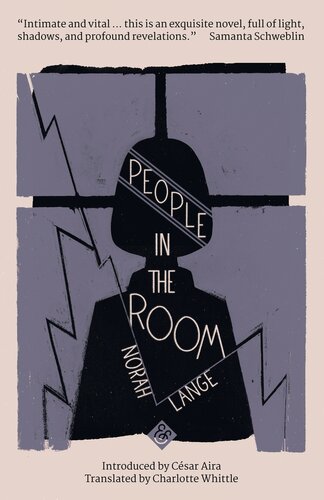
People in the Room
- اطلاعات
- نقد و بررسی
- دیدگاه کاربران
نقد و بررسی

June 15, 2018
A beautiful and mesmerizing modernist experiment from Argentina, available in translation at last, that makes near terror out of the mundane.Lange, a lesser-known figure of Argentina's literary boom who moved in the same circles as Borges, draws the reader into the obsessive imagination of a lonely 17-year-old girl living in Buenos Aires. The book is narrated in the first person, and its drama lies not in the events that take place but rather the wildly claustrophobic inner world of this young woman. César Aira cautions in the introduction that this is "not a novel to be read for pleasure." The eeriness sets in on the first page as the unnamed narrator describes her home on Calle Juramento as "merely the most comfortable and convenient place to watch the other house." She goes on to recall the stormy night--"as if everything had been prepared for me to attend this meeting with my appointed destiny"--when she first noticed the three female figures sitting in their drawing room in the house across the street. Instantly, she is obsessed, and watching "the three plain, defenseless faces" becomes her sole purpose: "I alone, verifying the essential, I alone with my gaze." She, herself a woman unnoticed (she remarks on this repeatedly), expresses both anxiety and relief that no one notices the neighbors. Though the three figures are almost always sitting in the same room, smoking and silent, she imagines countless insidious versions of their lives, and the fear of their deaths is her constant refrain. The short chapters read at times like a sequence of dreams as the reader follows her thoughts and reflections. The writing is crisp and direct, in stark contrast to the intricate psychological darkness the narrator inhabits, and it leaves the reader questioning every detail.Unsettling and masterful, this short but dense novel should entice fans of literary giants like Virginia Woolf and Clarice Lispector.
COPYRIGHT(2018) Kirkus Reviews, ALL RIGHTS RESERVED.

June 25, 2018
Originally published in 1950, this disquieting novel from Argentinean Lange centers on a teenager’s voyeuristic relationship with her neighbors. In Buenos Aires, a 17-year-old girl obsessively observes the trio of sisters (all older than her, though their exact age is never specified) across the street who spend every evening “sitting in the drawing room, one of them slightly removed from the others.” The narrator is convinced they must be “hiding something tragic,” and that the woman who sits separately, the eldest, is “guilty of the crime I knew nothing about.” Desperate for answers, the narrator intercepts a telegram, then uses it as a pretext to gain entry into the house. The sisters welcome her, and she quickly becomes a fixture of their “stubborn, unchanging evenings,” wherein the appearance of a spider and the switching on of an overhead light rate as major incidents. The narrator’s early theories about the eldest sister’s supposed criminal past are abandoned as she learns more about the family’s sad history; instead, she becomes convinced they are already dead. Much like the sisters themselves, Lange’s novel is “painstakingly solemn and vague.” Though this inscrutability is at times frustrating, Lange’s ability to magnify the tension of the uncertainty surrounding the sisters’ loneliness transforms this largely uneventful novel into a nerve-wracking ghost story.




دیدگاه کاربران